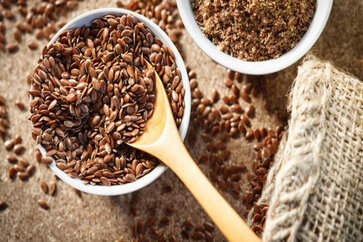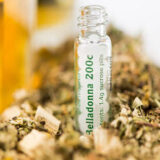Youthful Fitness is a Shield Against Age-Related Cancer
The link between a healthy lifestyle and a reduced risk of chronic diseases, including cancer, has been a topic of extensive research over the years. One area of significant interest is the impact of fitness during younger years on the likelihood of developing cancer in old age. 
The evidence suggests that engaging in regular physical activity during youth not only promotes overall well-being but also plays a crucial role in diminishing the risk of cancer later in life.
The Science Behind It: Building a Foundation for Cancer Prevention
The intricate interplay between physical activity and its profound impact on cancer prevention is grounded in a wealth of scientific understanding. The journey from youthful fitness to reduced cancer risk in old age is underpinned by a series of physiological processes that collaboratively fortify the body’s defenses against malignancies.
By examining the intricate mechanisms at play, we can uncover the remarkable potential of early-life fitness in shaping a healthier future.
Hormonal Harmony: A Vital Influence
Central to the connection between fitness during younger years and cancer risk reduction lies the regulation of hormones. Adolescence and early adulthood mark a phase of dynamic hormonal changes that can exert a lasting influence on cancer susceptibility.
Regular physical activity emerges as a stalwart in maintaining hormonal equilibrium, particularly concerning insulin and estrogen. Insulin, a hormone intricately linked to metabolism, holds a pivotal role in cancer development.
Elevated levels of insulin foster an environment conducive to cancer cell growth, especially in tissues like the breast and colon. Engaging in consistent physical activity enhances the body’s insulin sensitivity, contributing to lower insulin levels and reducing the potential for cancer-promoting conditions.
Similarly, estrogen levels undergo fluctuations during youth, impacting cancer risk, particularly in breast and ovarian tissues. Exercise, by influencing the intricate dance of hormones, helps regulate estrogen levels. This modulation acts as a buffer against hormonally-driven cancers, exemplifying the multifaceted impact of youthful fitness.
Empowering the Immune Arsenal
Youthful physical activity serves as a powerful ally in strengthening the immune system – the body’s frontline defense against cancer. Regular exercise initiates a cascade of effects that lead to enhanced immune function.
Immune cells are produced in greater numbers and their activity is heightened, creating a formidable surveillance network against abnormal cells.
This bolstered immune response acts as an ever-watchful sentinel, identifying and intercepting potentially cancerous cells before they gain a foothold.
This immune surveillance, nurtured through a commitment to fitness, demonstrates a dynamic example of how the body’s natural defenses can be harnessed to mitigate the risk of cancer development.
Weight Management: Sustaining the Balance
The link between obesity and cancer is a well-established one, further highlighting the importance of youthful fitness. Adipose tissue fosters a pro-inflammatory environment that encourages the growth of cancer cells.
Maintaining a healthy weight, particularly during youth, is vital in preventing obesity-related cancers, which encompass a spectrum of malignancies including those affecting the breast, colon, and pancreas.
Engaging in regular physical activity during formative years fosters an understanding of weight management, showcasing the synergy between exercise and dietary choices.
This foundation is instrumental in preventing excessive weight gain and its subsequent cancer-related implications, embodying the holistic impact of early-life fitness.
Molecular Guardianship: DNA and Telomeres
The benefits of exercise extend to the molecular realm, influencing DNA integrity and telomere maintenance. DNA mutations are precursors to cancer, and regular physical activity enhances the body’s capacity to repair damaged DNA, reducing the risk of genetic abnormalities that can lead to malignancies.
Furthermore, exercise contributes to the preservation of telomeres, the protective caps at the end of chromosomes. Longer telomeres are associated with decreased cancer risk, reflecting how exercise’s benefits permeate the very fabric of cellular health. By safeguarding DNA and telomeres, youthful fitness exerts a profound influence on cancer prevention.
Unveiling the Power of Fitness: Aerobic Capacity and the Battle Against 18 Cancers
The journey toward understanding the intricate relationship between physical activity and cancer prevention has taken a significant leap forward with a groundbreaking study published in the British Journal of Sports Medicine.
While earlier research has hinted at the potential of physical activity to shield against specific types of cancer, this recent study delves into uncharted territory, exploring the link between aerobic fitness and the risk of being diagnosed with 18 different types of cancer.
The study, based on a massive dataset derived from Swedish military conscription records, presents a compelling narrative of how early fitness may hold the key to reducing the risk of a spectrum of malignancies.
A Quest for Holistic Insights
The canvas on which this study unfolds is both vast and comprehensive. Drawing from a data pool of 1,078,000 men who underwent military conscription in Sweden between 1968 and 2005, the researchers embarked on an ambitious mission to uncover the connections between fitness during youth and the subsequent diagnosis of various cancers.
The cohort’s average age of 18 years highlights the significance of the findings, as this period represents a critical juncture for the establishment of lifelong habits.
Aerobic Fitness: A Potential Shield Against Multiple Cancers
The study’s revelations are striking. By examining the relationship between aerobic fitness levels at the time of conscription and the subsequent risk of cancer development, the researchers uncovered a pattern that speaks volumes about the power of early fitness.
Proper aerobic fitness during conscription emerged as a harbinger of a lower risk of being diagnosed with a range of cancers. The list of cancers includes formidable adversaries like head and neck cancer, esophageal cancer, stomach cancer, pancreatic cancer, liver cancer, colon cancer, rectal cancer, kidney cancer, and lung cancer.
This panoramic view of cancers, each with its unique challenges and origins, underscores the potential universality of the protective effects of aerobic fitness.
The Landscape of Prevention: Paving the Way for Wellness
These findings resonate with a sense of empowerment and possibility. The linkage between aerobic fitness during youth and a reduced risk of diverse cancers offers a holistic approach to prevention.
It illuminates the broader significance of early-life choices, not only in the context of individual health but in the collective battle against cancer on a societal scale.
The implications of this study transcend the realm of exercise physiology, highlighting the potent interplay between lifestyle choices and disease susceptibility. It echoes the sentiment that investing in one’s fitness during the formative years is akin to investing in one’s health and longevity.
A Glimpse into the Future
As we peer into the future, armed with insights from this study, the landscape of cancer prevention takes on new dimensions. The study underscores the enduring importance of fitness not only for the sake of physical prowess but for the profound impact it can have on the very fabric of health and well-being.
It provides a glimpse into the potential trajectories of countless lives – how choices made during youth can set the stage for a future less fraught with the challenges of cancer.
Conclusion: A Call to Empowerment
The study’s revelations stand as a testament to the monumental power of proactive choices. Aerobic fitness during youth emerges as a guardian against a multitude of cancers, shaping the trajectory of health for years to come.
It beckons a call to empowerment – a call for individuals, communities, and societies to recognize the profound impact of early fitness on the canvas of well-being.
As we embrace these insights, we pave the way for a future defined not just by the challenges of cancer, but by the victories of prevention, resilience, and the potential to lead lives marked by vitality and longevity.
























